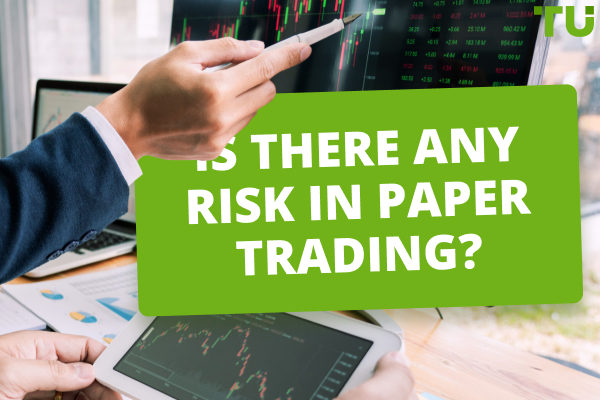Forex Trading Strategy Optimization – All You Need To Know
To optimize your Forex trading strategy, follow these simple steps
- 1
Backtest your strategy
- 2
Analyze your results
- 3
Make adjustments to your strategy
- 4
Include risk management elements
- 5
Include money management elements
Maximizing the potential of your forex trading strategy is a continuous journey of refinement and adaptation. In this guide, the experts at TU discuss the art of strategy optimization, exploring how traders can fine-tune their approach to achieve greater consistency, improved risk management, and ultimately, enhanced profitability in the dynamic world of forex trading.
Do you want to start trading Forex? Open an account on Roboforex!What is Forex trading?
Forex trading refers to the practice of exchanging one currency for another in order to make a profit. The main objective is to take advantage of the fluctuating exchange rates between currency pairs. Unlike stock markets that deal with buying and selling company shares, Forex trading focuses on currencies. It is the most liquid market worldwide, with a daily trading volume of nearly $7.5 trillion.
What is a Forex trading strategy?
A Forex trading strategy refers to a systematic approach that traders utilize for identifying market opportunities and determining when to execute trades. These strategies can be based on
Technical analysis
This approach involves analyzing price charts, patterns and various technical indicators to predict price movements. Traders who utilize analysis rely on tools such, as moving averages, relative strength index (RSI), or candlestick patterns to guide their trading decisions.
Fundamental analysis
Fundamental analysis entails evaluating political and social factors that may impact the value of a currency. Traders employing this strategy analyze indicators like interest rates, employment figures, inflation and geopolitical events. The aim of analysis is to uncover the value of a currency.
Combination of both
Some traders prefer combining fundamental analysis to make informed decisions. This balanced approach allows them to leverage the strengths of each method. In practice, traders generally take short term trades based on technical analysis and long term trades based on fundamental signals.
Why is it important to optimize your Forex trading strategy?
Optimizing a trading strategy is primarily important because it improves the effectiveness and profitability of the strategy. Other benefits include
Setting clear trading goals
Defining trading goals is a first step in optimizing your strategy. These goals may include your desired return on investment, risk tolerance level and investment time horizon. Having objectives helps sharpen your focus and guides your trading decisions.
Choosing an appropriate trading style
The Forex market offers trading styles, such, as day trading, swing trading and position trading. It's important to choose a strategy that aligns with your preferences and trading style to increase your chances of success.
Continuous adjustment
It's crucial to backtest your strategy using data as part of the optimization process. This allows you to evaluate how well your strategy has performed in the past identify areas for improvement and make adjustments. Market conditions change over time so it’s essential to adapt your approach to remain effective in the market environment.
How to optimize your Forex trading strategy
Experts have prepared a step-by-step guide to help you optimize your Forex trading strategy
Step-1 – Backtest your strategy
To perform a backtest on your trading strategy, follow these steps
Gather historical data
Start by collecting data specific to the currency pair you plan on trading. This data is crucial, for simulating market conditions and assessing how well your strategy would have performed.
Define your trading rules
Clearly outline the rules that govern your trading strategy. Determining the entry and exit points specifying stop loss levels and deciding on position sizing are all aspects that you should consider. To test your strategy, apply the trading rules you have defined to the data you have collected. This will involve running your strategy through market conditions to assess its performance.
Analyze the results
After conducting a backtest, analyze the results to identify areas that may need improvement based on the data. It is essential to adapt your strategy to accommodate changes, in market conditions or address any risk factors.
While backtesting can provide insights into your strategy’s performance, it is important to note that it does not guarantee future success. To stay competitive traders should continuously monitor their strategies. Be ready to make adjustments as market dynamics evolve. This adaptability is crucial for optimizing a trading strategy.
Step-2 – Analyze your results
This step can be broken down in the following key parts
Key metrics
Begin by evaluating metrics such as win rate, average profit/loss, per trade and drawdown experienced during trades. These metrics provide insights into how your strategy has performed in market conditions. In practise, traders generally try to strike the right balance between the key metrics to come up with their optimal strategy.
Evaluate risk and reward
Take a look at the risk reward ratio of your strategy. Assess whether the potential gains outweigh the losses and if the risk associated with your trades aligns with your comfort level. It's crucial to find a balance that minimizes risk while maximizing profit potential. Also, traders must know how to look at the risk and reward ratio. For example, if you trade a risk reward ratio of 1:2 consistently, you would only need to be accurate 33% of the time to breakeven.
Stay updated on market conditions
Keep an eye on the market conditions and evaluate how your strategy is performing in real time trading. Actively monitoring allows you to adapt quickly to changing market dynamics and make adjustments to your strategy.
Learn from mistakes
Maintain a trading journal to record both trades and losses. Analyze your decision making process for each trade. Learn from any mistakes made. This self-reflection will contribute to a cycle of improvement.
Seek input
Consider seeking feedback from traders or mentors. They can offer perspectives. Identify areas for improvement that you might have overlooked.
Step-3 – Make adjustments to your strategy
Adjusting your strategy would include the following actions
Thoroughly analyze your trading results
Start by conducting an analysis of how your trades have been performing. This analysis will help you understand the strengths and weaknesses of your strategy and identify areas that require adjustments.
Fine tune your risk management
As part of adjusting your strategy, consider refining your risk management techniques. This could involve making changes to stop loss levels position sizing or implementing a risk reward structure. It's crucial that your risk management strategy aligns well with both your risk tolerance and trading goals.
Improve analysis
If you rely on analysis in your trading strategy, delve deeper into the specifics of the technical indicators you use. Evaluate their effectiveness and consider whether making adjustments-such as using indicators or modifying their parameters-could enhance the quality of your analysis.
Adapt to market conditions
It’s essential to adapt your strategy to accommodate shifting market conditions. For example if market volatility increases, you might need to incorporate stop loss levels into your strategy to avoid trade closures.
Try experimenting with timeframes
Sometimes it's worth exploring timeframes to gain valuable insights. By switching between longer and shorter timeframes, you can determine which timeframe suits your trading style and goals the best.
Step-4 – Risk management
Defining risk tolerance
Before diving into the market, it's important to establish your comfort level with risk. Having an understanding of how risk you're willing to take will help you tailor your trading activities accordingly. This means that your trade sizes and strategies should align with your risk tolerance in order to avoid overexposure.
Using stop-loss orders
Implementing stop loss orders is a technique for managing risk. These orders automatically close your trade at a predetermined price level if the market moves against you. By using stop loss orders you safeguard your trading capital.
Diversify your portfolio
By trading different currency pairs, you can spread out your risk. You can also minimize the impact of any single trade going wrong. All in all, diversification increases the likelihood of success and helps avoid drawdowns.
Maintain discipline
Maintaining discipline is fundamental in risk management, Stick to your trading plan avoid letting emotions drive your decisions as emotional trading may lead to actions that undermine all efforts made in managing risks.
Expert tip. Continuous learning and adaptation are essential in navigating the evolving market. Stay engaged in learning remain informed, about market developments, new strategies, and emerging technologies. It's important to remain open to adjusting your risk management strategies as you accumulate experience and gain perspectives.
Step-5 – Money management
The most important, yet least-talked-about aspect of Forex trading is money management. Here’s how seasoned traders use money management concepts in practise
Maintain a reward-to-risk ratio of 1 or higher
Experts suggest that you should trade with a reward-to-risk ratio (R/R) of 1 or higher. The R/R ratio represents the relationship between profits and potential losses in a trade. For instance, if you enter a trade on EUR/USD with a profit target of 100 pips and a stop loss level of 50 pips, your R/R ratio for that trade would be 2. By focusing on trades with R/R ratios exceeding 1, you reduce the number of winning trades required to break. This approach allows for maintaining a balance between risk and reward.
Only trade with what you can afford to lose
One rule in money management is to trade with funds that you can comfortably afford to lose. This rule holds most significance for beginner traders. Establishing a monthly loss is important as well; if you reach that limit, it's advisable to pause your trading activities. It's important to never put at risk the funds you need for things, like rent, mortgage payments, food or commuting to work. Forex trading carries risks so it's crucial to ensure that your financial stability is not compromised.
Determine how much risk you are comfortable with per trade
Once you have determined the amount of capital you're willing to trade with, the next step is to quantify how much you are willing to risk in each trade. This measurement will help guide where you place your stop loss orders for each trade.
Consider using a trailing stop
A trailing stop is a type of stop loss order that adjusts as a trade moves in your favor. This tool allows you to secure profits while still protecting against reversals. Implementing a trailing stop can be particularly beneficial during trending markets as it enables capturing gains while minimizing losses.
Best Forex brokers


Expert tips for optimizing your Forex trading strategy
With key concepts covered, here are a few expert tips based on trading experience
Using a trading journal
Keeping a trading journal can be more rewarding than you can think of. This journal should document all aspects of your trading activity, such, as when you enter and exit trades, the reasons behind your decisions, the levels at which you set stop loss and take profit orders, and any notes about your emotions. The main purpose of having this journal would be self-assessment. By reviewing your past trades you can identify patterns of success and failure, which will help you tune your strategies. Additionally, the journal will provide insights into your trading psychology and will give you a view of how well you've been performing over time.
Trade with a demo account first
A demo account simulates trading conditions. This risk free environment allows you to gain experience, build confidence in your abilities, and test out strategies. It's an opportunity to familiarize yourself with the trading platform and understand how to execute orders without worrying about financial losses. While virtual funds may not replicate the emotions as trading completely, they do provide a solid foundation for learning and practice. Achieving profitability and successful execution in a demo account can be seen as signs that you're ready to engage in live trading.
Don't be afraid to experiment
The Forex market is constantly changing. So, traders should be open to experimenting with trading strategies, technical indicators, and risk management approaches. Moreover, it's equally important to maintain discipline by tracking the outcomes of each experiment. Always remain aware of the level of risk you're taking and avoid decisions based on impulses.
FAQs
How do you create a successful Forex trading strategy?
Developing a successful Forex trading strategy involves several important steps. First, it's crucial to establish trading goals that include - the desired return on investment, risk tolerance, and time horizon. Next, choose a trading style that aligns with your goals and personal preferences such as day trading, swing trading, or position trading. Then, select technical indicators that suit your chosen style and assist in identifying entry and exit points, followed by backtesting your strategy by using data to evaluate its performance and identifying areas for improvement. Lastly, continually adjust your strategy to adapt to changing market conditions in order to increase the likelihood of success.
What is the most efficient Forex strategy?
There is no single “most effective" strategy. Effectiveness is determined by how a strategy aligns with goals concerning risk tolerance, profit targets or preferred trading style. Traders often combine approaches such, as analysis and fundamental analysis to create a tailored strategy that suits their requirements.
How can I improve my Forex trading performance?
To enhance your performance in trading, consider the steps
Continual learning
Stay updated on market developments, economic events, and trading strategies. Expanding your knowledge is crucial for making decisions.Risk management
Implement risk management techniques such as using stop loss orders, diversifying your portfolio, and establishing risk tolerance levels.Maintain a trading journal
Keep a record of your trades to track them analyze your performance and identify areas where you can improve.Backtesting
Evaluate the performance of your trading strategy by backtesting it using data. This will help you identify any weaknesses or areas for improvement.Emotional discipline
Avoid making decisions based on emotions. Stick to your trading plan. Refrain from chasing losses or taking risks.
What is the 5 3 1 trading strategy?
The 5 3 1 trading strategy is an approach employed by traders. The "5" represents selecting five currency pairs for trading to create a portfolio. The "3" involves creating three trading strategies that incorporate combinations of trading styles, technical indicators, and risk management techniques. This ensures adaptability, to market conditions. The number "1" symbolizes the factor in choosing the times to execute trades, maximizing the effectiveness of the strategy.
Glossary for novice traders
-
1
Volatility
Volatility refers to the degree of variation or fluctuation in the price or value of a financial asset, such as stocks, bonds, or cryptocurrencies, over a period of time. Higher volatility indicates that an asset's price is experiencing more significant and rapid price swings, while lower volatility suggests relatively stable and gradual price movements.
-
2
Leverage
Forex leverage is a tool enabling traders to control larger positions with a relatively small amount of capital, amplifying potential profits and losses based on the chosen leverage ratio.
-
3
Cryptocurrency
Cryptocurrency is a type of digital or virtual currency that relies on cryptography for security. Unlike traditional currencies issued by governments (fiat currencies), cryptocurrencies operate on decentralized networks, typically based on blockchain technology.
-
4
Day trading
Day trading involves buying and selling financial assets within the same trading day, with the goal of profiting from short-term price fluctuations, and positions are typically not held overnight.
-
5
Options trading
Options trading is a financial derivative strategy that involves the buying and selling of options contracts, which give traders the right (but not the obligation) to buy or sell an underlying asset at a specified price, known as the strike price, before or on a predetermined expiration date. There are two main types of options: call options, which allow the holder to buy the underlying asset, and put options, which allow the holder to sell the underlying asset.
Team that worked on the article
Chinmay Soni is a financial analyst with more than 5 years of experience in working with stocks, Forex, derivatives, and other assets. As a founder of a boutique research firm and an active researcher, he covers various industries and fields, providing insights backed by statistical data. He is also an educator in the field of finance and technology.
As an author for Traders Union, he contributes his deep analytical insights on various topics, taking into account various aspects.
Dr. BJ Johnson is a PhD in English Language and an editor with over 15 years of experience. He earned his degree in English Language in the U.S and the UK. In 2020, Dr. Johnson joined the Traders Union team. Since then, he has created over 100 exclusive articles and edited over 300 articles of other authors.
Mirjan Hipolito is a journalist and news editor at Traders Union. She is an expert crypto writer with five years of experience in the financial markets. Her specialties are daily market news, price predictions, and Initial Coin Offerings (ICO).











